Disclosure: This article contains affiliate links. We may earn a commission from purchases at no extra cost to you, which helps our travel content.
The morning sun illuminates Arequipa's sillar buildings to a brilliant white as I stand in the Plaza de Armas, the majestic El Misti volcano watching over the city like an ancient guardian. Mezanmi! What a sight to behold! While most culinary enthusiasts flock to Lima for Peru's gastronomy, I've learned through years of traversing this remarkable country that Arequipa holds culinary treasures that rival—and sometimes surpass—those of the capital. Known to Peruvians as 'La Ciudad Blanca' (The White City), Arequipa isn't just architecturally stunning; it's a living museum of Peruvian culinary history where pre-Columbian techniques meet Spanish colonial influences. As a history teacher who's documented food traditions across five continents, I can tell you with certainty: to understand Peru's soul, you must taste Arequipa's heart. Join me on this week-long exploration where we'll dive into volcanic stone kitchens, traditional picanterías, and markets bursting with ingredients that have sustained Andean civilizations for millennia.
The Picanterías: Arequipa's Culinary Institutions
The history of Arequipa's cuisine cannot be told without mentioning its picanterías—traditional restaurants that have preserved culinary traditions dating back to the 16th century. These establishments, once humble chicha (corn beer) houses where locals would gather for simple meals, have evolved into the guardians of Arequipa's gastronomic heritage.
On my second day in Arequipa, I made my way to La Nueva Palomino, perhaps the most renowned picantería in the city. Walking through its doors felt like stepping through a portal in time. The air was thick with the aroma of rocoto peppers, huacatay (Andean black mint), and slow-cooked stews. Wooden tables filled a courtyard where families gathered—a Sunday tradition that has remained unchanged for generations.
"The picantería is not just a restaurant," explained Mónica, the third-generation owner who graciously showed me around her kitchen. "It is a cultural institution where our history lives through our food."
What makes these establishments unique is their adherence to tradition. Many still cook in q'oncha—kitchens with clay ovens fired by local wood that impart distinct smoky flavors impossible to replicate with modern methods. The menu follows a weekly schedule that locals know by heart: Monday brings chaque (a hearty wheat soup), Tuesday is chairo (a soup with dehydrated potato), and Sunday—the most important day—features the legendary adobo arequipeño (pork marinated in chicha and spices).
I arrived early on Sunday morning to witness the preparation of adobo. By 5 AM, the kitchen staff was already tending to enormous clay pots where pork had been marinating overnight in a mixture of chicha de jora, rocoto peppers, onions, and local herbs. The meat would simmer for hours, becoming increasingly tender until it practically dissolved on the tongue.
"Our recipes are not written down," Mónica told me with pride. "They are passed from generation to generation through practice. My grandmother taught my mother, who taught me. The measurements are in the heart, not on paper."
This oral tradition of culinary knowledge reminds me of similar practices I've documented in Haiti, where my own ancestors preserved cooking methods through generations without written records. It's a powerful reminder that food is not merely sustenance but a living historical document.
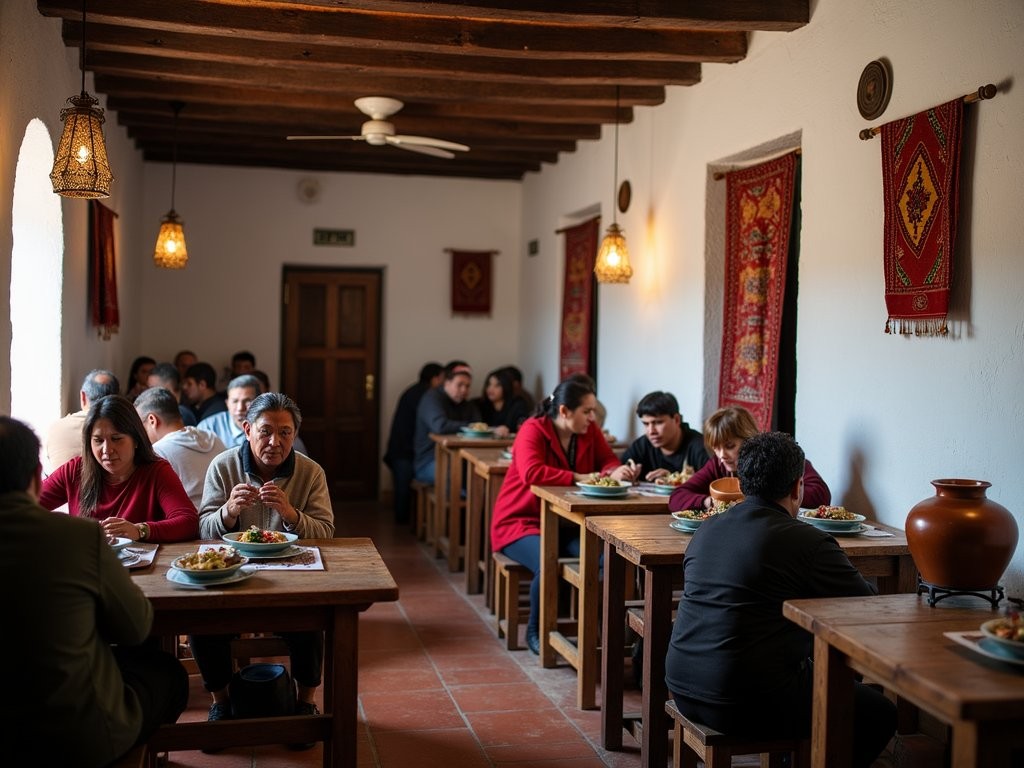
💡 Pro Tips
- Visit picanterías between 12-3pm when they're most lively and all dishes are available
- Sunday is the best day to experience authentic adobo arequipeño, but arrive early as popular picanterías fill quickly after church services
- Ask for 'doble' if you want extra rocoto relleno—they're often happy to accommodate hungry visitors
🛍️ Recommended Products
Food Tour
For those wanting deeper insights into Arequipa's picantería culture, I highly recommend Culinary Backstreets' 'Arequipa Traditions' walking tour. Their local guides—often from families with picantería backgrounds—take you to establishments tourists rarely find, explaining the historical significance of each dish while you feast.
These small-group tours provide context and access to family-run establishments that might be intimidating to visit alone, especially with language barriers.
View ProductDisclosure: These are affiliate links. We may earn a commission from purchases at no extra cost to you.
Volcanic Kitchens: The Alchemy of Stone and Fire
Perhaps what distinguishes Arequipa's cuisine most fundamentally from other Peruvian regional traditions is its relationship with the volcanic landscape that surrounds it. This is a culinary tradition born of fire and stone—quite literally.
On the third day of my journey, I ventured to the rural outskirts of Arequipa to visit a family that still prepares meals using traditional volcanic stone cooking methods. The Flores family welcomed me to their home in Characato district, where three generations work together preparing dishes as their ancestors did.
"The volcanic stone holds heat differently," explained Don Eduardo Flores as he showed me their outdoor kitchen. "It distributes temperature evenly and slowly releases it. This changes everything about how food cooks."
The centerpiece of their cooking area was a remarkable structure: a stove and oven complex constructed entirely from sillar, the white volcanic stone that gives Arequipa its nickname. Next to it stood several flat cooking stones called tullpas.
I watched in fascination as Doña María prepared rocoto relleno—Arequipa's signature dish of stuffed spicy peppers—by first roasting the fierce red rocotos directly on the hot stone to char their skins before carefully removing the seeds (while keeping the pepper intact) and stuffing them with a mixture of ground beef, onions, garlic, local cheese, and spices.
"The stone imparts minerals to the food," she explained, noting my interest in the cooking surface. "Dishes prepared this way have flavors you cannot achieve with metal pans."
To demonstrate, she prepared two versions of ocopa (a creamy sauce made with huacatay, peanuts, and yellow peppers)—one using a traditional stone mortar called a batán, and another in a modern blender. The difference was remarkable. The hand-ground sauce had a texture and depth that the machine-processed version couldn't match.
This connection between geological environment and culinary practice fascinates me as both a historian and food enthusiast. Throughout human history, we've adapted our cooking to the materials available to us, but few places demonstrate this relationship as clearly as Arequipa, where the very substance of the earth becomes an essential culinary tool.
The family's teenage son, noticing my enthusiasm, showed me a collection of pre-Columbian stone cooking implements they had found on their property over the years. "These are from the Wari people," he said, handling a worn stone with a shallow depression. "They cooked here a thousand years ago, using these same techniques."
Holding that ancient tool, I felt the profound continuity of human experience—how the fundamental act of transforming food with heat connects us across time in ways both tangible and spiritual.
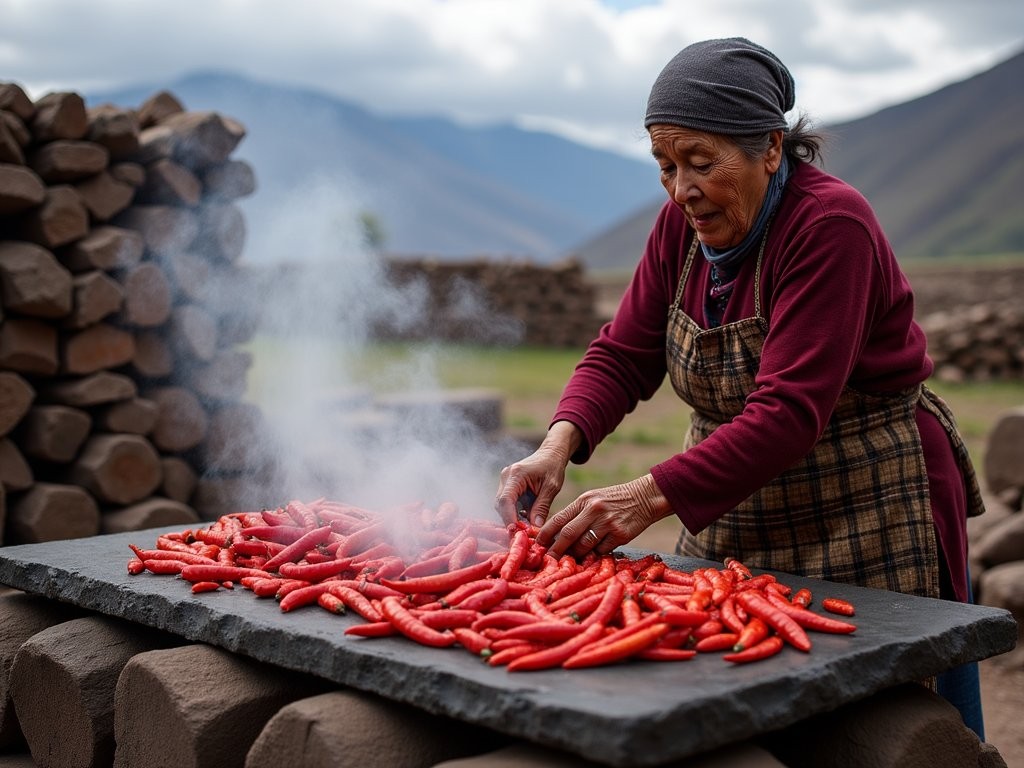
💡 Pro Tips
- Book a volcanic stone cooking class at least 3 days in advance through local agencies near the Plaza de Armas
- When buying volcanic cooking stones as souvenirs, look for those that haven't been treated with chemicals—authentic ones should have slight variations in color
- Restaurants advertising 'cocina de piedra' (stone cooking) often charge premium prices but deliver authentic flavors worth experiencing
The San Camilo Market: A Living Culinary Museum
No serious exploration of Arequipa's food culture would be complete without immersing oneself in the sensory overload that is Mercado San Camilo. Built in 1881 and designed by the same engineer who created the Eiffel Tower, Gustave Eiffel, this iron-structured market serves as the beating heart of Arequipa's food ecosystem.
I arrived at San Camilo early on a Thursday morning, just as vendors were arranging their goods. The market was already humming with activity—restaurant chefs selecting the day's ingredients, elderly women haggling over potato prices, and farmers bringing in produce harvested before dawn.
What strikes me about San Camilo, compared to markets I've documented in other parts of the world, is its extraordinary biodiversity. Peru is home to over 3,800 varieties of potato, and it seemed that at least several hundred were represented here. The tuber section displayed a bewildering array: purple, yellow, red, speckled, some as small as marbles, others as large as a child's shoe.
"This one is for causa," explained a vendor named Josefina, holding up a yellow potato. "This one for chuño (freeze-dried potato), this for soup, this for baking..." Each variety has a specific culinary purpose, knowledge accumulated over thousands of years of Andean agricultural tradition.
Moving deeper into the market, I encountered the cheese section, where large wheels of queso arequipeño sat alongside fresh quesillo (a soft cheese used in many traditional dishes). An elderly vendor offered me a sample of her homemade rocoto chili paste, warning me with a mischievous smile about its heat. Mezanmi! The intensity brought tears to my eyes while she laughed approvingly.
The market also houses numerous small food stalls where market workers and shoppers eat breakfast and lunch. I settled at a counter run by a woman named Carmen, who has operated her stall for 42 years. She served me caldo de gallina (hen soup) in a deep bowl, the broth rich and clarified, with chunks of potato, a piece of corn on the cob, and tender chicken that had clearly lived a full life before becoming my breakfast.
"Good soup requires time and respect for the ingredients," Carmen told me as I ate. "Young people want everything fast now. Good food cannot be rushed."
As a historian, I find markets like San Camilo to be invaluable windows into cultural continuity. Here, pre-Hispanic ingredients like quinoa, kiwicha, and native chilies sit alongside colonial introductions like wheat and dairy products. The market represents a living synthesis of Peru's complex history—indigenous agricultural genius meeting Spanish colonial influence, creating something entirely unique.
For the curious traveler, San Camilo offers an unfiltered view into the foundations of Arequipeñan cooking. The ingredients you'll see here are the same ones that will appear, transformed, on your plate at dinner in the city's finest restaurants.
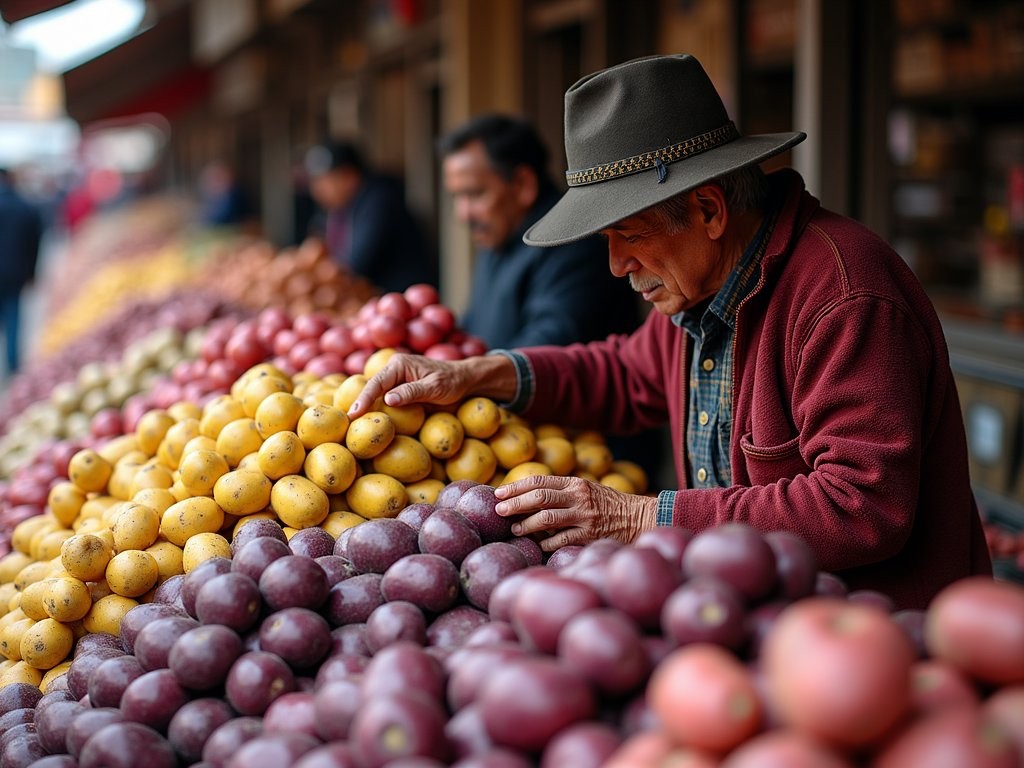
💡 Pro Tips
- Visit San Camilo Market between 7-10am to see the best selection of fresh produce and avoid the midday crowds
- Bring small bills (soles) as vendors rarely have change for large denominations
- Try the queso helado (a traditional frozen dessert despite its name meaning 'cheese ice cream') from vendors near the market entrance
🛍️ Recommended Products
Cooking Class
After exploring the market, I highly recommend taking your newfound ingredient knowledge to Culinary Arequipa's cooking workshop. Their market-to-table class begins with guided shopping at San Camilo (they'll help you navigate the overwhelming options) followed by hands-on preparation of three traditional dishes in their colonial-era kitchen.
This experience teaches techniques difficult to learn from cookbooks alone, like properly deseeding rocoto peppers without burning your hands and the proper consistency for various sauces.
View ProductDisclosure: These are affiliate links. We may earn a commission from purchases at no extra cost to you.
The Triumvirate of Arequipeñan Classics
While Arequipa's cuisine encompasses a vast repertoire, three dishes form what I've come to think of as the holy trinity of Arequipeñan gastronomy: rocoto relleno, chupe de camarones, and ocopa. Together, they showcase the region's defining characteristics—bold flavors, ingenious use of local ingredients, and techniques refined over centuries.
Rocoto Relleno: Fire Tamed by Tradition
The rocoto pepper sits at the heart of Arequipa's culinary identity. Unlike other chili peppers domesticated in the Americas, the rocoto (Capsicum pubescens) thrives in cooler, high-altitude environments. With a heat level that can rival habaneros, these apple-shaped peppers require special preparation to become edible without overwhelming the palate.
At La Capitana, a restaurant housed in a 300-year-old colonial building, I watched chef Alvaro Romero prepare what many consider the definitive version of this dish. "The secret is in how you prepare the rocoto itself," he explained, demonstrating how the peppers are boiled multiple times in water with changing salt concentrations to reduce their fieriness while preserving their distinctive flavor.
The peppers are then stuffed with a mixture of ground beef, onions, garlic, local spices, raisins, olives, and hard-boiled egg—a filling that reflects both indigenous and European influences. Topped with slices of fresh cheese and baked until bubbling, the final dish achieves a remarkable balance: the fruity heat of the pepper tamed just enough to allow the complex flavors of the filling to shine.
Chupe de Camarones: The Bounty of Two Ecosystems
Though Arequipa sits high in the Andes, its cuisine benefits from relatively close access to the Pacific coast. Chupe de camarones (prawn chowder) exemplifies this geographic advantage, combining freshwater prawns with Andean crops like potatoes, corn, and huacatay.
At Picantería La Lucila, I arrived at 5 AM to watch the preparation of their famous chupe. The kitchen staff began by creating a flavorful stock using prawn heads and shells, which would become the base of the soup. To this rich broth, they added yellow potatoes, chunks of fresh cheese, broad beans, corn, rice, and a generous amount of cream. Just before serving, whole prawns are added to cook briefly in the hot soup.
"Chupe is more than food—it is medicine," insisted Doña Lucila, the establishment's 78-year-old matriarch. "When you are sick or sad, a good chupe makes everything better."
The resulting dish is a study in contrasts: creamy yet light, complex yet comforting, and distinctly representative of Arequipa's position as a cultural and ecological crossroads.
Ocopa: Pre-Hispanic Techniques, Timeless Appeal
Perhaps no dish better represents the pre-Hispanic foundations of Arequipeñan cooking than ocopa—a sauce traditionally prepared using a stone mortar and pestle called a batán. This ancient tool, used by Andean civilizations for thousands of years, creates a texture impossible to achieve with modern appliances.
At a small family restaurant called El Batán (named after this traditional tool), I watched in fascination as the chef prepared ocopa the traditional way. Fresh huacatay (Andean black mint), ají amarillo (yellow chili), onions, garlic, and roasted peanuts were ground together with a rhythmic motion that seemed almost meditative. Slowly, she added oil and evaporated milk, continuing to work the mixture until it achieved a silky consistency.
This sauce is typically served over boiled potatoes and garnished with hard-boiled eggs and black olives. The flavor is unlike anything in Western cuisine—herbaceous from the huacatay, with gentle heat from the chilies, richness from the peanuts, and a distinctive tanginess that lingers pleasantly.
"My grandmother taught me that good ocopa should be thick enough to coat the back of a spoon but fluid enough to slowly drip off," the chef explained, demonstrating this exact consistency with a wooden spoon.
As I savored these three iconic dishes throughout my week in Arequipa, I was struck by how they embody different aspects of the region's history—indigenous techniques and ingredients meeting Spanish influences, all adapted to the unique environmental conditions of this volcanic valley.

💡 Pro Tips
- Order rocoto relleno with a side of pastel de papa (potato cake) to balance the heat of the pepper
- The best chupe de camarones is served on Tuesdays and Fridays when fresh prawns arrive from the coast
- When trying ocopa for the first time, ask for the sauce on the side if you're unsure about the flavor profile—you can always add more
Sweet Endings: Arequipa's Colonial Dessert Heritage
While savory dishes may be the stars of Arequipa's culinary firmament, the city's sweet traditions offer fascinating insights into its colonial past. The Spanish conquest brought not only Catholicism and European ingredients but also an elaborate confectionery tradition deeply connected to monastic life.
Nowhere is this heritage more evident than in Arequipa's convents, particularly the Monasterio de Santa Catalina—a sprawling 16th-century religious complex that once housed up to 450 nuns. Within these walls, cloistered women developed unique dessert recipes that have become integral to Arequipeñan identity.
On my fifth day in the city, I arranged a special visit to meet Sister Margarita, one of the few remaining nuns who still prepares traditional sweets using centuries-old recipes. The monastery's kitchen—with its massive wood-fired ovens and high ceilings—feels like a time capsule from colonial Peru.
"Many of our desserts were created because of necessity and available ingredients," Sister Margarita explained while rolling out dough for buñuelos de convento (convent fritters). "The nuns came from wealthy Spanish families and brought their culinary traditions, but they had to adapt them to local ingredients."
This adaptation created distinctive treats like queso helado (literally "frozen cheese," though it contains no cheese at all), a cinnamon-infused frozen dessert made with milk, coconut, and rice flour. Its name comes from its cheese-like appearance when properly prepared.
Another monastic creation is manjar blanco, similar to dulce de leche but traditionally made with goat's milk and flavored with vanilla and citrus peel. This sweet filling appears in countless Arequipeñan pastries, including the popular alfajores that are sold throughout the city.
Perhaps most emblematic of Arequipa's sweet heritage are the budineras—puddings made with local fruits like lucuma (a native fruit with maple-like flavor), chirimoya (custard apple), or quince, often combined with port wine and adorned with elaborate decorative patterns.
"Each convent had signature desserts they became known for," Sister Margarita told me. "It was a matter of pride and also a source of income for the religious community."
As a historian, I find these convent sweets particularly fascinating because they represent a form of female economic agency during a period when women had few opportunities for independence. Through their confectionery skills, nuns could achieve recognition and generate income for their communities while working within the constraints of a patriarchal society.
Today, many of these traditional desserts can be found at Arequipa's historic cafés, particularly around the Plaza de Armas. At La Nueva Palomino, I ended my meal with sanguito—a pudding made from bread, chancaca (raw cane sugar), dried fruits, and spices that reflects both Spanish techniques and indigenous ingredients.
What makes Arequipa's dessert tradition special is not just the flavors but the cultural synthesis they represent—European techniques applied to Andean ingredients, creating something entirely unique to this volcanic corner of Peru.
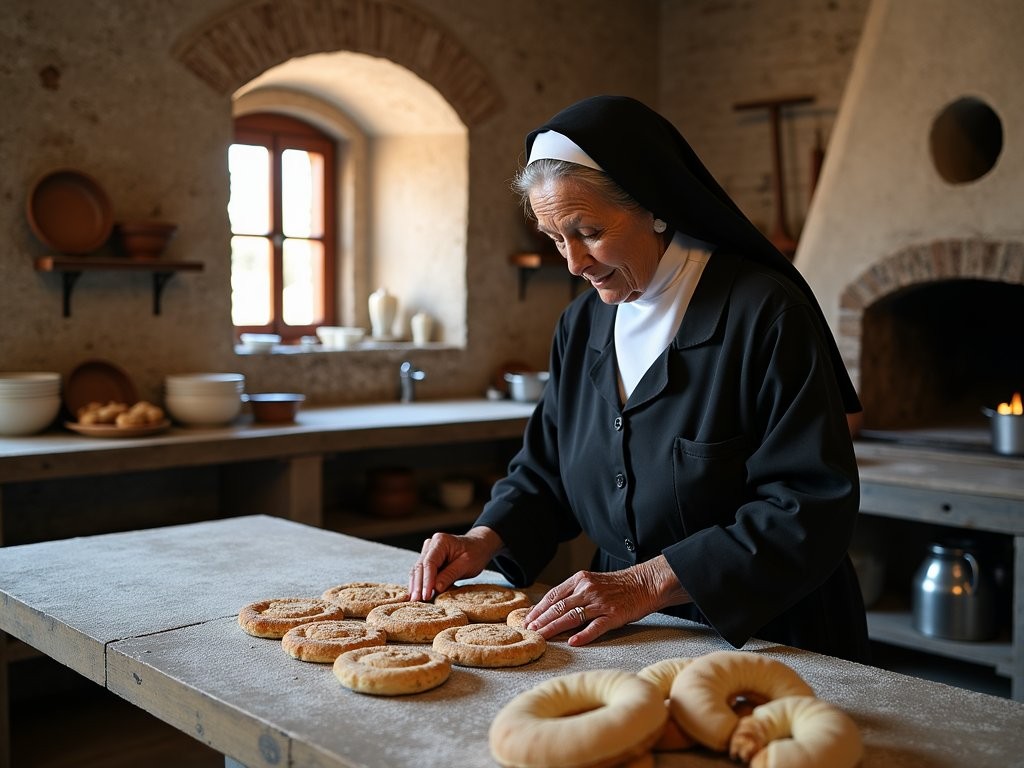
💡 Pro Tips
- Visit the Santa Catalina Monastery early in the day when they sometimes offer small tastings of traditional convent sweets
- The best queso helado is found at small street carts around the Plaza de Armas in the late afternoon
- Look for cafés advertising 'postres conventuales' (convent desserts) for the most authentic traditional sweets
🛍️ Recommended Products
Kitchen Tool
After falling in love with Arequipa's desserts, I purchased a traditional wooden budin mold to recreate these recipes at home. Tiendas Artesanales near the San Francisco Church sells authentic hand-carved wooden molds that create the distinctive patterns seen in convent puddings. They're beautifully crafted, surprisingly affordable, and make wonderful souvenirs that you'll actually use.
These traditional molds create authentic patterns impossible to achieve with modern bakeware and are lightweight enough to easily pack in luggage.
View ProductDisclosure: These are affiliate links. We may earn a commission from purchases at no extra cost to you.
Chicha and Beyond: The Beverages of Arequipa
No exploration of Arequipa's food culture would be complete without examining its traditional beverages, which are as culturally significant as its cuisine. Throughout my week in the White City, I discovered that what Arequipeños drink reveals as much about their history and identity as what they eat.
Chicha de Jora: The Sacred Corn Beer
At the foundation of Andean drinking culture is chicha de jora—a fermented corn beer with pre-Columbian origins that continues to play a central role in both everyday life and ceremonial occasions. My journey to understand this ancient beverage led me to a traditional chichería on the outskirts of Arequipa, where production methods have remained largely unchanged for centuries.
Don Guillermo, a third-generation chicha maker, showed me the process from start to finish. It begins with germinating maize kernels (jora) by soaking and sprouting them—a process that converts starches to fermentable sugars. The germinated corn is then dried, ground, and boiled in large clay vessels before fermentation.
"Good chicha requires patience," Don Guillermo explained as he stirred a massive pot of bubbling liquid with a wooden paddle. "Three days minimum for fermentation, but the best chicha is aged seven days."
The resulting beverage—slightly cloudy with a tangy, complex flavor profile—typically contains 1-3% alcohol. What fascinated me most was learning about chicha's historical significance. In Inca times, it was considered sacred, used in religious ceremonies and as payment for communal labor projects. Today, it remains deeply connected to Andean identity and community bonds.
In traditional chicherías, patrons still practice la tinka—spilling a few drops on the ground as an offering to Pachamama (Mother Earth) before drinking. This gesture connects modern Arequipeños to their pre-Hispanic ancestors through an unbroken ritual tradition.
Anise and Altitude: Medicinal Traditions
Arequipa's location at over 7,600 feet above sea level has influenced not just what people drink but why they drink it. Throughout my stay, I noticed locals frequently consuming mate de coca (coca leaf tea) and various herbal infusions to combat the effects of altitude.
At the small family-run Herboristería San Pedro near the market, I met Señora Clemencia, a traditional herbalist who prepares remedies based on knowledge passed down through generations. "For altitude sickness, coca leaves with muña and chamomile," she prescribed, carefully measuring dried leaves into a paper bag. "For digestion after heavy meals, anise with lemon verbena."
These medicinal teas reflect a sophisticated understanding of plant properties developed over centuries by indigenous healers and adapted to address the particular challenges of high-altitude living.
The Pisco Connection
While pisco is produced primarily in Peru's coastal regions, Arequipa has developed its own distinctive pisco culture with unique preparations that reflect local tastes. At La Despensa, a small bar specializing in artisanal pisco, I received an education in regional variations from bartender Carlos Villanueva.
"Arequipeños prefer their pisco preparations less sweet than Limeños," he explained, preparing a classic pisco sour with precisely measured ingredients. "Our altitude affects how we perceive flavors and how alcohol affects us."
I was particularly intrigued by a local specialty called escribano—a refreshing mixture of pisco, rocoto pepper, lime juice, and local herbs that exemplifies Arequipa's preference for bold, spicy flavors even in its beverages.
As a teacher who often discusses the cultural significance of fermentation in world history with my students, I found Arequipa's beverage traditions to be a perfect case study in how drinks reflect environmental adaptation, spiritual beliefs, and cultural identity. From pre-Columbian chicha to colonial-era herbal remedies to modern pisco innovations, the liquid heritage of this region tells a story as rich and complex as its food.

💡 Pro Tips
- When visiting a chichería, observe locals and follow the tradition of 'la tinka' (spilling a few drops for Pachamama) before drinking
- Purchase mate de coca tea bags to help with altitude adjustment, but remember these cannot be brought into the US due to restrictions
- Try the local cocktail 'escribano' even if you don't typically enjoy spicy drinks—bartenders can adjust the heat level for sensitive palates
Final Thoughts
As my week in Arequipa draws to a close, I find myself sitting at a small café overlooking the Plaza de Armas, the cathedral's silhouette dramatic against the setting sun. My notebook is filled with recipes, histories, and the stories of people who have shared their culinary heritage with me. Arequipa's gastronomy isn't just about flavor—it's a living historical document, a testament to cultural resilience and adaptation. What makes this city's food culture exceptional isn't just its deliciousness (though that would be reason enough to visit), but how clearly you can taste its multicultural history in every bite: pre-Columbian techniques, Spanish colonial influences, and uniquely Andean ingredients coming together in perfect harmony. For couples seeking a culinary adventure beyond Peru's more traveled paths, Arequipa offers not just extraordinary meals but profound connections to the land, its people, and their shared history. As we say in Haiti, manje byen se viv byen—to eat well is to live well. In Arequipa, you will certainly eat well, but more importantly, you'll understand how food tells the story of a place and its people. Bring your appetite, your curiosity, and most of all, your willingness to see Peru through a different lens—one shaped by volcanic stone, ancient traditions, and the generous spirit of Arequipeños themselves.
✨ Key Takeaways
- Arequipa's cuisine represents a perfect fusion of pre-Columbian techniques and ingredients with Spanish colonial influences
- Traditional picanterías follow specific weekly menus that have remained largely unchanged for centuries
- The volcanic landscape shapes cooking methods unique to the region, particularly the use of stone in food preparation
- San Camilo Market offers the best window into the extraordinary biodiversity of Andean ingredients
📋 Practical Information
Best Time to Visit
year-round (May-October offers most reliable weather)
Budget Estimate
$50-100 per day excluding accommodations
Recommended Duration
5-7 days
Difficulty Level
Beginner

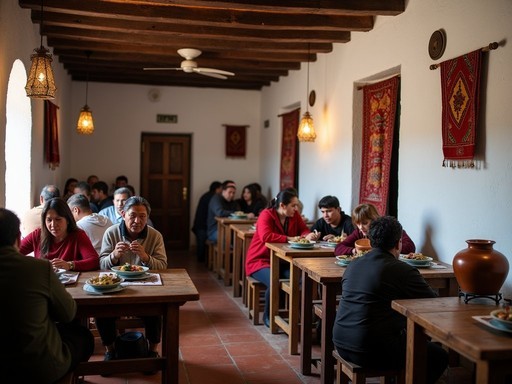

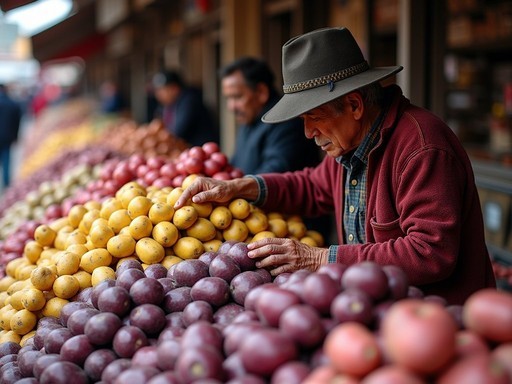
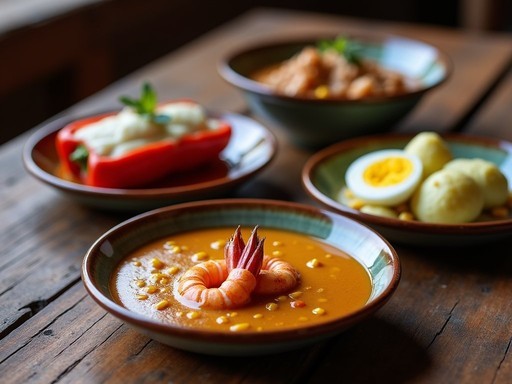
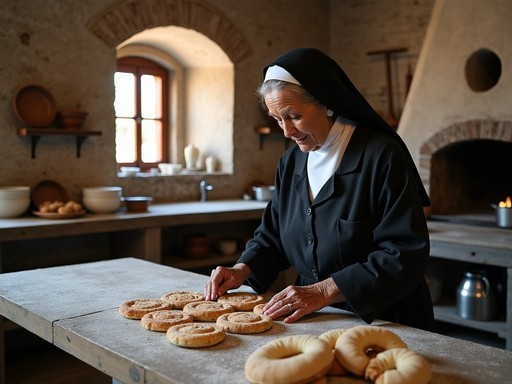
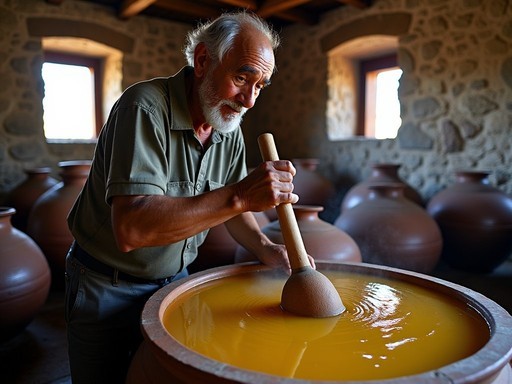


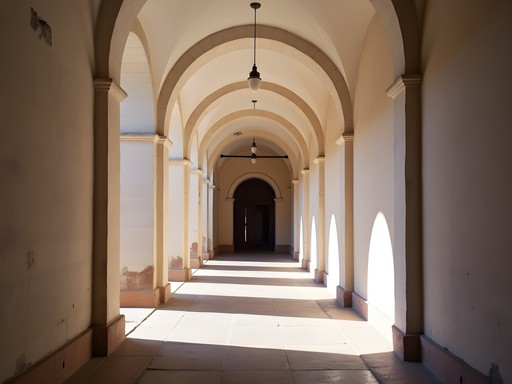
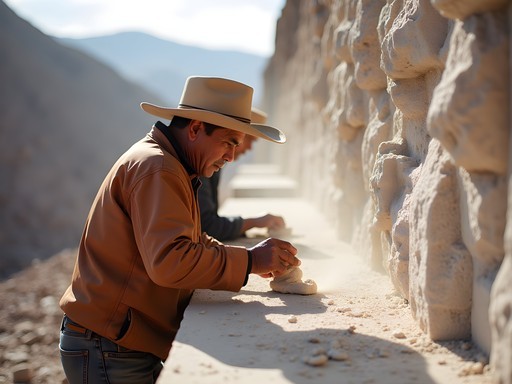
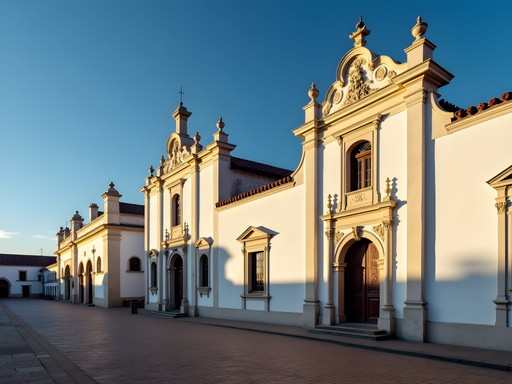
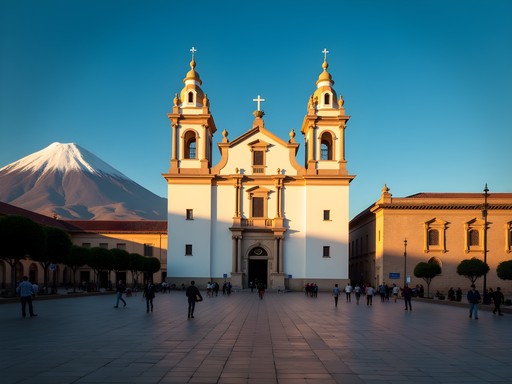
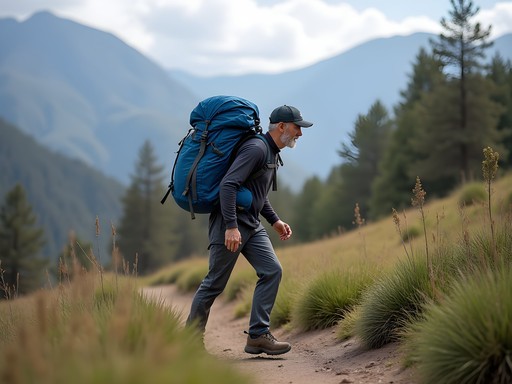



Comments
Fatima Sims
Pierre! Your post transported me right back to Arequipa! Last year I spent two weeks there learning to cook with a local family, and it changed my perspective on Peruvian cuisine forever. The way they use the volcanic stone (called 'batan') to grind chilis creates this incredible depth of flavor you just can't get with modern equipment. My host abuela insisted I take my cooking journal to record everything properly - best advice ever! The three dishes you highlighted are definitely the holy trinity of Arequipa cuisine, but don't sleep on the cauche de queso - that cheese sauce with yellow chili is deceptively simple but absolutely divine. Did you make it to any of the countryside picanterías? Some of the best ones are actually outside the city center!
oceanperson
Which picantería would you recommend for someone who can't handle super spicy food but still wants to try authentic dishes?
sunnyfan
When I visited, Sol de Mayo was really accommodating about spice levels! Just tell them 'poco picante' and they'll adjust accordingly. Their ocopa is amazing and not too spicy by default.
wanderblogger
Great post! I visited Arequipa in 2023 and would add that early morning is the best time to visit San Camilo Market - you'll see the locals shopping for the freshest ingredients and the light through the iron structure is amazing for photos. The queso helado vendors usually set up around 10am if you want to try that unique Arequipeñan ice cream!
Hannah Woods
Pierre, your post brings back such vivid memories of my time in Arequipa last year! The picanterías really are the soul of Arequipeñan cuisine. I'd recommend La Nueva Palomino to anyone visiting - their adobo is transcendent, especially if you go on a Sunday morning when locals fill the place. I found the contrast between Lima's modern gastronomy and Arequipa's traditional cooking methods fascinating from an anthropological perspective. The volcanic stone cooking creates flavors you simply can't replicate elsewhere. Did you get a chance to try the chupe de camarones at sunset? There's something magical about that combination.
oceanperson
Hannah, I'm planning a trip to Peru next month but only have time for either Lima or Arequipa. Would you recommend Arequipa over Lima for food specifically?
Hannah Woods
Oceanperson, that's a tough choice! Lima has world-class restaurants and more variety, but for authentic traditional Peruvian cuisine with a unique regional identity, Arequipa wins. If food is your primary interest and you want to experience something truly distinctive, I'd choose Arequipa. Plus, it's less touristy and generally more affordable.
islandzone
Mezanmi! I see you're bringing some Haitian flavor to Peru, Pierre! That rocoto relleno looks incredible - definitely adding Arequipa to my list now.
Marco Flores
Pierre, your post captures the soul of Arequipa's food scene beautifully! I spent a month there last year documenting traditional cooking methods. The volcanic stone cooking you mentioned creates such unique flavors - especially for the guinea pig (cuy)! For anyone planning to visit, I recommend staying near the historic center and doing a picantería crawl - start with La Benita for lunch, then La Lucila for dinner. The best part of Arequipa is how the food connects to the landscape - those volcanic soils produce incredible potatoes and corn varieties you won't find elsewhere. Did you get a chance to visit any of the chicherías in the countryside? Those family-run spots where they make chicha de jora (corn beer) the traditional way are incredible experiences.
Pierre Kelly
Merci Marco! I did visit a chichería in Characato - amazing experience watching the fermentation process. Your picantería crawl suggestion is spot on. La Benita's ocopa sauce was unbelievable!
smartstar
Great post! I'm heading to Arequipa in November and I'm a bit worried about the spice levels since I'm not great with super hot food. Are there milder options at the picanterías or ways to request less spicy versions? Also wondering how vegetarian-friendly the city is? Thanks for any tips!
Pierre Kelly
Don't worry about the spice! Most places will ask about your spice tolerance. For vegetarians, try the papas a la ocopa or pastel de papa. The San Camilo Market also has amazing vegetarian options - just look for the juice stalls that serve quinoa-based dishes!
Marco Flores
Just adding to Pierre's advice - I found Arequipa surprisingly veggie-friendly! There's a little place called El Buda Profano near San Lázaro that does amazing vegan sushi with local ingredients. And don't miss trying the queso helado which is vegetarian - it's not cheese despite the name, but a delicious cinnamon ice cream dessert that's an Arequipa specialty! I always bring my food guide when exploring new cities in South America - it helped me find some hidden gems in Arequipa.
smartstar
Thanks both! This is super helpful. Queso helado sounds amazing - definitely trying that!
happyhero1196
Those photos of the rocoto relleno made my mouth water! Going to Peru next year and definitely adding Arequipa to my itinerary now!
photolegend
Just got back from Arequipa last month and this post brings back so many memories! The rocoto relleno at La Nueva Palomino was life-changing. Did you try the adobo at any of the morning picanterías? I woke up at 5am just to experience it with the locals and it was so worth it. The chicha they serve alongside is the perfect complement to cut through the richness. Your description of the volcanic kitchens was spot on - there's something magical about food cooked that way.
Pierre Kelly
Thanks photolegend! Yes, I did try the adobo at Doña Josefa near Yanahuara - incredible how such a simple stew can have such depth! The 5am experience sounds authentic - that's real dedication!
photolegend
Doña Josefa was on my list but never made it there! Next time for sure. Did you find the food in Arequipa spicier than other parts of Peru?
smartblogger
Are there any cooking classes you'd recommend in Arequipa? I'd love to learn how to make some of these dishes!
adventurebuddy
We did one with Peruvian Cooking Experience near the Plaza de Armas. It was about 4 hours and we made rocoto relleno and a potato dish. The chef took us to San Camilo market first to pick ingredients. Highly recommend!
smartblogger
That sounds perfect, thanks! Adding it to my itinerary.
Venture X
Premium card with 2X miles, $300 travel credit, Priority Pass